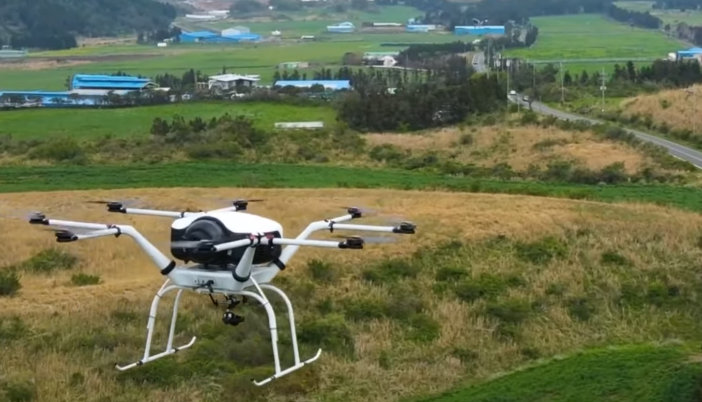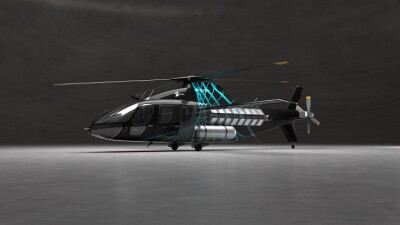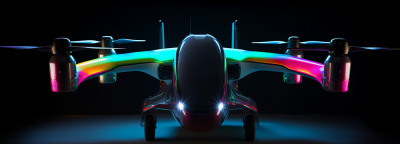In the first part of this three-part series, we explored different electric powering solutions for drones. Now, the focus is on new fuels, such as hydrogen fuel cells and solar panels, and how their use can improve the future of the drone industry.
Compared to traditional battery-powered drones, hydrogen fuel cells offer longer flight times and quicker recharging times, increasing operational efficiency and reducing downtime. Also, as the world steers towards a zero-net emissions future, hydrogen fuel cells show great potential in achieving that since they produce zero emissions at the point of use, making them an environmentally friendly alternative to traditional fossil fuel-powered engines.
Solar-powered drones use motors and onboard devices powered by solar panels that transform solar energy into electricity. This allows drones to perform long-endurance missions while staying in the air indefinitely or flying for days, weeks, or even months, as they do not need to land to recharge.
Just like in the first part of this series, the following is a list of some of the companies that are developing these types of powering solutions.
Intelligent Energy
Focused on the development of lightweight, high-efficiency, hydrogen fuel cell systems, Intelligent Energy (IE) delivers a range of zero-emission hydrogen fuel cell products to various industries, including drones. Built for fixed-wing, rotary wing, and VTOL, IE-SOAR is the company’s range of lightweight hydrogen fuel cell modules that “replaces drone batteries and unlocks long endurance flight.”
Designed for agriculture, linear inspection, parcel delivery, lidar and mapping, and more, the IE-SOAR family increases operational efficiency and unlocks BVLOS operations by enabling drones to fly further and for longer. From 800W to 2.4kW, IE’s fuel cell allows drones to refuel quicker and fly three times further than a battery-powered equivalent.
By requiring only hydrogen and ambient air to produce power, IE-SOAR powered drones produce zero emissions. This means that commercial UAV operators have the unique benefit of green, sustainable power, keeping commercial carbon footprints down and protecting the environment.
Doosan Mobility
Claiming to be the company that released the first commercial fuel cell powerpack for drones, Doosan Mobility focuses on mobile applications of fuel cell technology to enable reliable long-endurance flight. The company has developed three variations of its fuel cell powerpack—the DP30M2S, DM30M2S, and DM15—to accommodate different needs.
The DP30M2S increases drones’ uptime by providing over two hours of flight time and less than 10 minutes of charging time. Additionally, Doosan successfully reduced the total weight of the powerpack with an ultrathin metal developed with its proprietary technology. To enable high energy output and durability, Doosan used a key material in the stack: Membrane Electrode Assembly (MEA). Also, the design of the stack structure maintains even energy output among cells, meaning that the high energy output of the fuel cell powerpack remains stable during flight.
The DM30M2S is a completely customized DP30M2S to fit into any airframe. The DM15 is a modular, compact version of the DM30 without exterior housing, allowing easy integration into even more drone airframes while providing less power.
Airbus Aerostack
While not directly connected to drones, Aerostack, a joint venture between Airbus and automotive supplier ElringKlingerAG, was founded in 2020 to research, develop, and assemble fuel cell stacks for future aeronautic applications. As part of the ZEROe program and Airbus’ ambition to bring the world’s first hydrogen-powered commercial aircraft by 2035 to market, Aerostack is currently developing and validating aviation-compatible hydrogen fuel cell stacks and their full lifecycle management.
There are two methods that the company is exploring: hydrogen combustion and hydrogen fuel cells. The first method uses gas turbines with modified fuel injectors, and fuel systems are powered with hydrogen, similarly to how aircraft are powered today. The second method creates electrical energy which in turn powers electric motors that turn a propeller or fan. This is a fully electric propulsion system, quite different from the propulsion system on aircraft currently in service.
Radical
To get into the air within the next 12 months, Seattle-based Radical recently secured a $4.5 million series seed to support the development of autonomous, high-altitude, solar-powered aircraft. Radical’s goal is to revolutionize how we connect and monitor our planet through its stratospheric solar drone technology, allowing drones to fly over targeted areas for months without the need to land.
The new funding will help Radical to build and test a full-scale aircraft with a projected wingspan in the range of 110 feet and the ability to fly as high as 70,000 feet. The idea is to offer new possibilities to commercial and government applications, such as continuous real-time monitoring of weather systems, wildfires, or illegal fishing; high-resolution imaging and mapping; mobile cellular service and broadband direct-to-device internet access.
















Comments